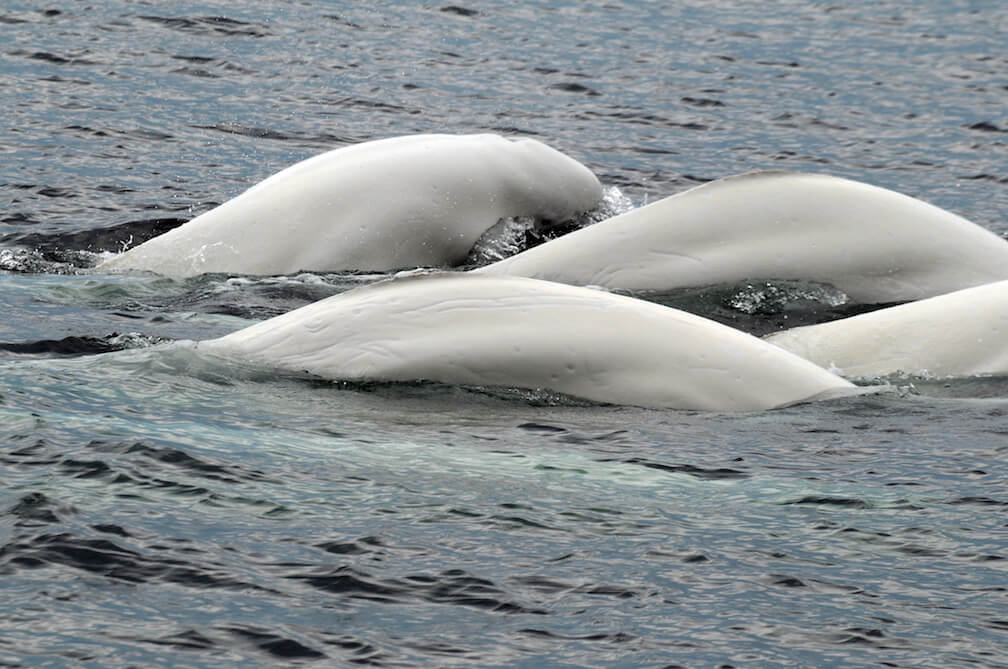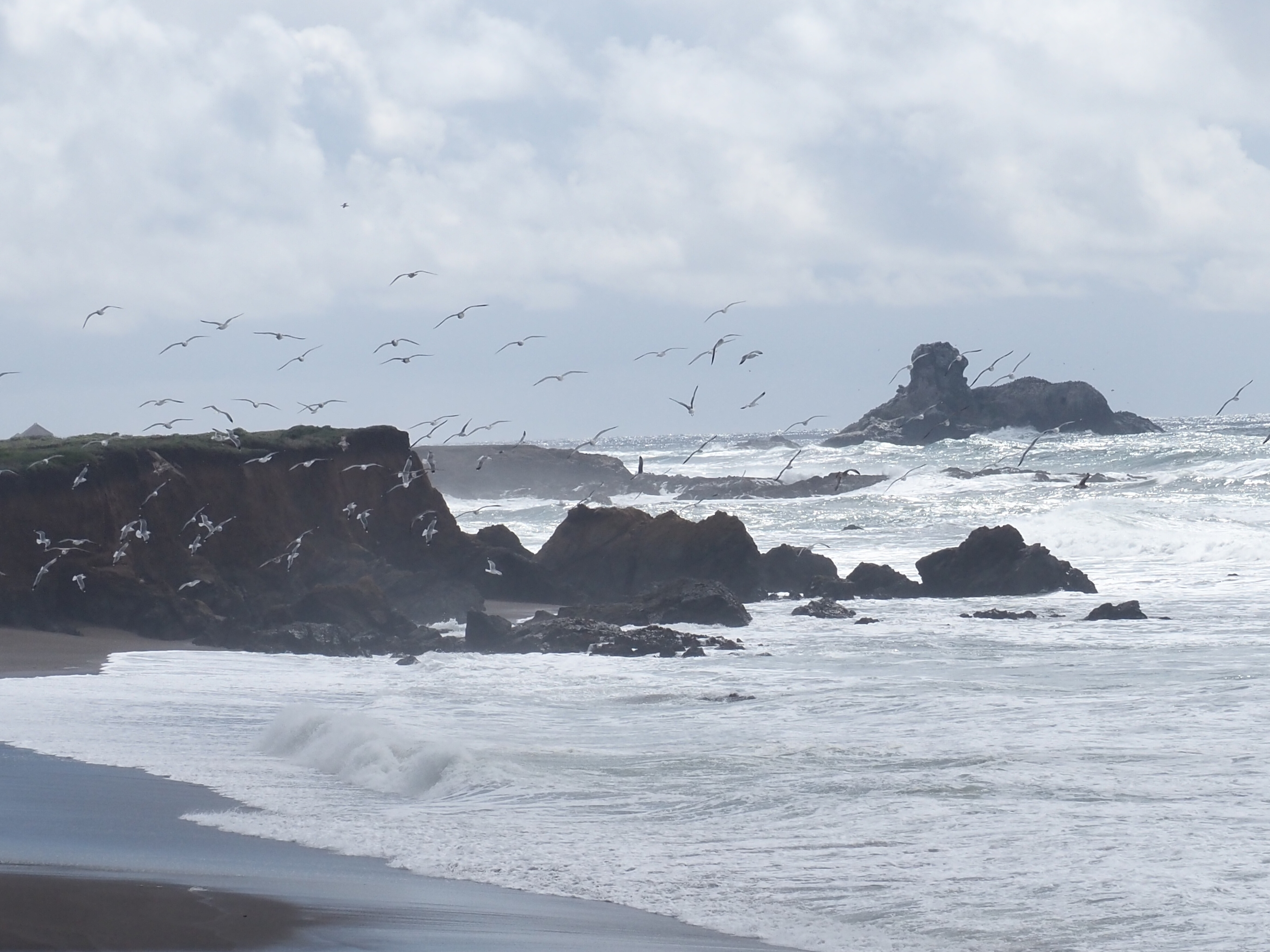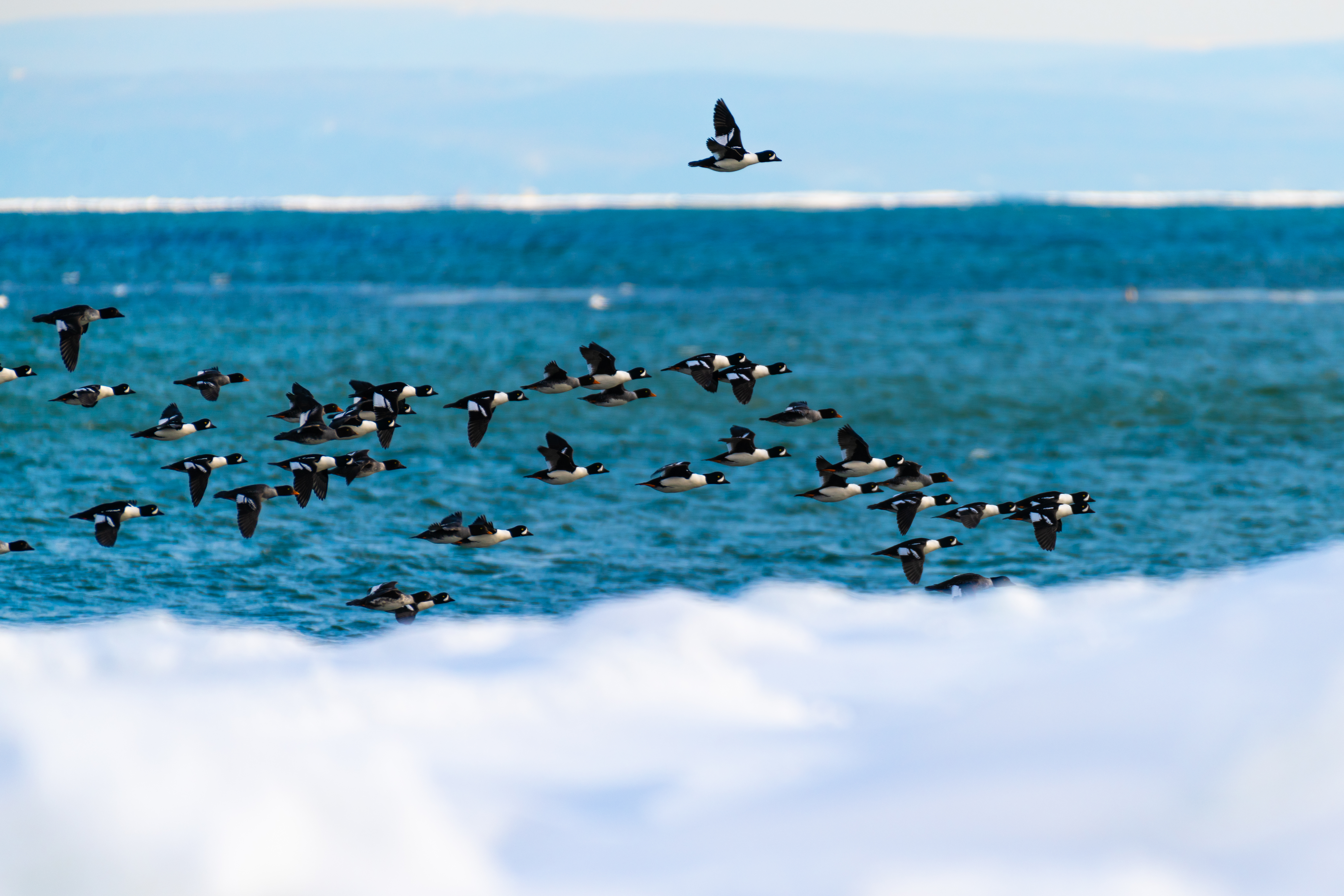On Wednesday, August 8, the Bleuvet team was on the water searching for a herd of belugas to carry out its photogrammetry program. This program, as seen in these field notes, aims to document beluga waist sizes, amongst other things.
It was in the vicinity of Cap de la Tête au Chien in the Charlevoix region that a crew member saw a strange object floating on the calm water. As they drew closer, it became clear that it was a small whale carcass, more specifically, a decaying beluga carcass.
After a call to the Quebec Marine Mammal Emergency Response Network, the decision was made to take samples from the carcass. After securing the beluga with rope, work began. First the animal was measured. With a length of less than 1.70 m, we were quickly able to determine that it was a newborn. Subsequently, the jaw was removed. The latter will also be used to determine the age of the individual according to the absence or presence of teeth and their size. Lastly, skin samples were also taken for genetic analysis.
Because of the state of decomposition, the sex of the individual could not be determined. It is not uncommon to find a newborn in such an advanced state of decay due to how fragile their tissues are. Also noteworthy is the presence of beetles both inside and on the surface of the carcass. These could be an indication that the whale washed ashore at some point and then returned to sea with the tide.
Once sampling had been completed, the Bleuvet crew continued on its course in search of live belugas, thus looking for another type of data that is just as interesting, but far less messy and malodorous.
If you see a dead whale or one that is in trouble, do not forget to contact the Quebec Marine Mammal Emergency Response Network!
Recently identified belugas
Dl21 Yogi, adopted by Bell Canada
Dl83 Vita, adopted by Shaklee Canada Inc.
Dl113 Jetstream, adopted by The Fairmont Vancouver Airport
Dl173
Dl204 Mirapakon, adopted by Les enduits Mirapakon Inc.
Dl240
Dl370
Dl516
Dl1465
Dl1757 Blanche, adopted by the municipality of Tadoussac
Dl1903 Artsea, adopted by the customers of Simons
Dl1935
Dl2384
Dl9031 Dorothy, adopted by Adelaide Gomer, Mathijs and Anneke Wittink
Dl9050







